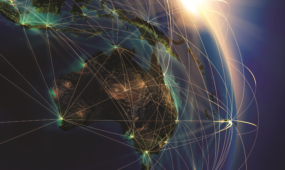Space junk-eating rocket on track for September demonstration
Defence
A SPACE startup is planning to demonstrate technology for its metal-eating super rocket at the International Astronautical Congress in South Australia next month.

Sign up to receive notifications about new stories in this category.
Thank you for subscribing to story notifications.

The Neumann Drive was developed by South Australian startup Neumann Space and feeds on magnesium to power itself over long distances.
The rocket has been identified for its potential to remove fragmented rocket parts, defunct spacecraft and other space junk adrift in space.
It is stable enough to power a spacecraft from Earth’s atmosphere to Mars and back on a single block of magnesium but could also use a variety of other metals.
This would not only mean travelling to Mars was possible but it could be used to send a payload station to one of its moons as a fuel stop for spacecraft on long journeys into deep space.
The drive works similar to an arc welder that creates thrust by eroding material at the tip of a metal cathode, which is what founder and Chief Scientist Paddy Neumann plans to demonstrate at the IAC.
Once its material evaporates and is ionised it is “spat down range” causing a pulsating thrust and propelling the rocket forward, similar to the way a bullet leaves the barrel of a gun.
The 68th IAC will be held at the Adelaide Convention Centre in the South Australian capital Adelaide from September 25-28. Up to 4000 delegates are expected to attend including the heads of all the major space agencies and Space X founder and CEO Elon Musk.
Neumann Space is also joining an Airbus mission to the International Space Station (ISS) in 2019 to test its real-world capabilities and collect data. The rocket will be tethered to the ISS for the year-long trial before a free-flight model is tested.
Neumann said Mars had an abundance of magnesium, which raised the possibility of establishing a metal refinery on the planet to harvest more fuel.
He said most space junk was made out of consumable metal that could be used to refuel the Neumann Drive.
“Harvesting the magnesium on Mars and feeding it back into the thrusters you could create a fuel stop for deep space travel,” Neumann said.
“You could also find magnesium in asteroids, as the mineral Olivine, so the potential is there.
“It would create more opportunities to study space but obviously there would then need to be a change to international space law for this to happen. It definitely is one of the best shots we have to continue to send satellites deeper.”
Researchers have found that magnesium is the optimal fuel source but materials such as tungsten, chromium and carbon have also been successfully trialled.
The Neumann Drive can produce thrust at more than 10,000 seconds for 1lb of thrust when magnesium is used as fuel. This is significantly better than gridded iron thrusters, which max out at about 3500 seconds.
“Just like a combustion engine, our rocket would change size depending on what it’s connected to,” Neumann said.
“From a speedboat to an aircraft carrier it gets bigger and bigger and this could do the same thing in theory, or you can put multiple thrusters on a machine, it could change how we travel deeper into space.
“We haven’t tried using metals like iron, which could also work, but obviously magnesium has tested the best so far.”
According to the European Space Agency (ESA) there are about 18,000 large objects in orbit and more than 90 per cent of them are space junk caused by more than 250 spacecraft explosions. There are also millions of smaller debris floating in space, which are too small for radars to track.
A collision with a piece of material only a few millimetres in size is enough to alter a satellite’s orbit and offset its orientation.
Neumann said his research group was still working on developing a way to capture and reprocess space debris into a usable resource for the rocket when it is tested in space.
“A lot of the metals we are using already have aerospace applications and a lot of the structural parts of the (space) junk are made out of those metals,” he said.
The South Australian government is developing a space industry and has enlisted 11 local space start-ups, including Myriota, Fleet Space Technologies, Neumann Space and Inovor Technologies, to increase their footprint in the multi-billion-dollar global space industry.
Musk visited Adelaide last month to announce the partnership between his company Tesla and French renewable energy company Neoen for the 100MW/129MWh battery at Neoen’s Hornsdale Wind Farm in the state’s Mid North.
Jump to next article



